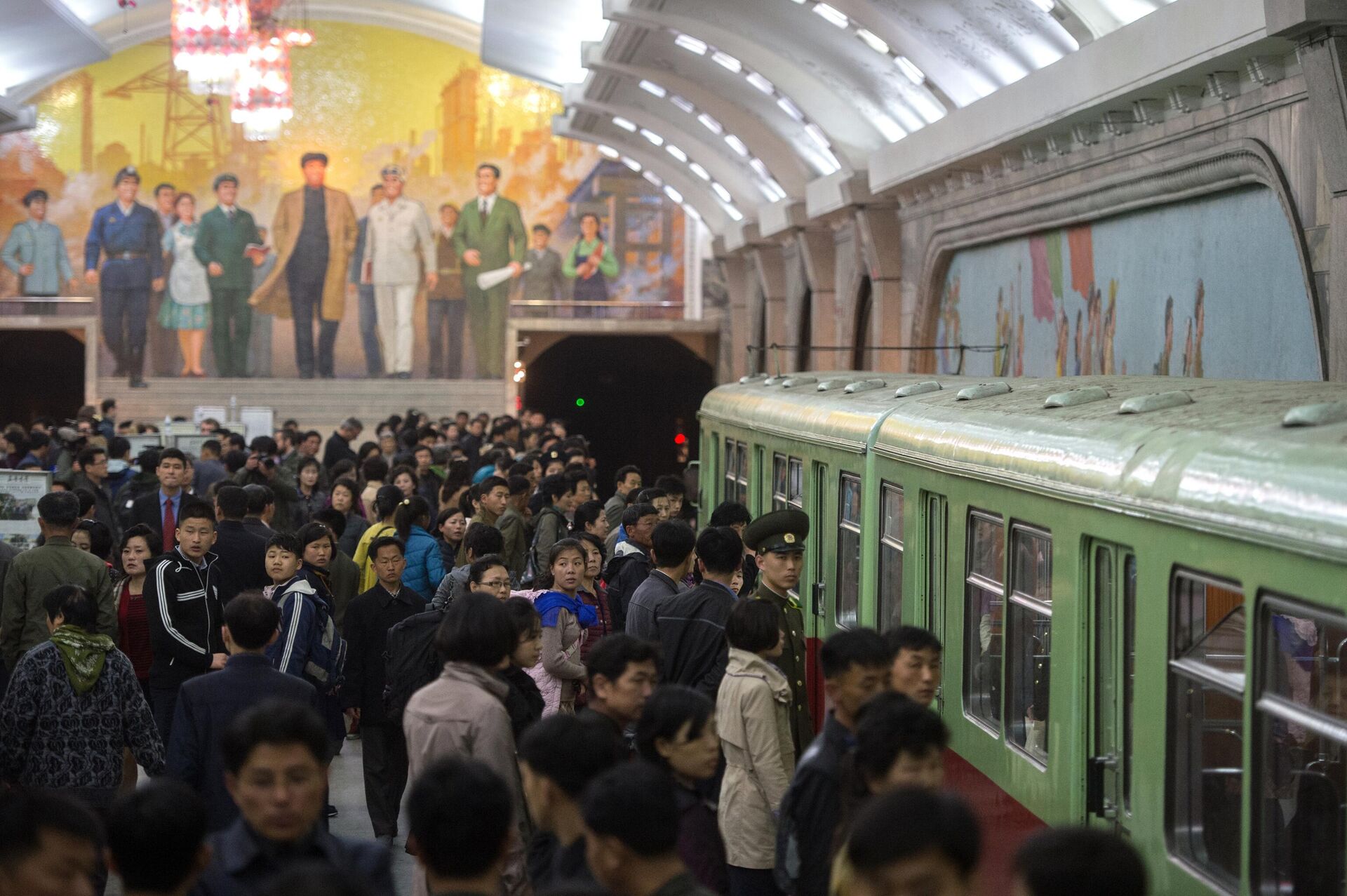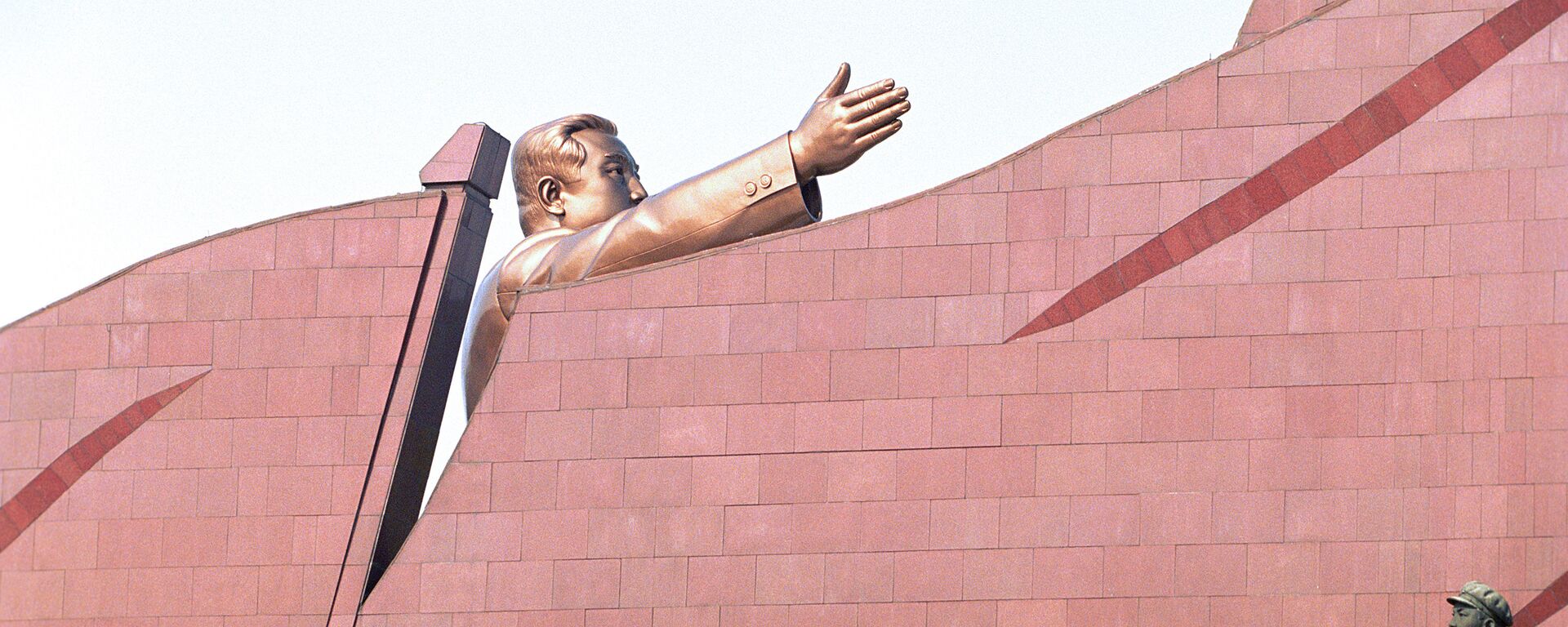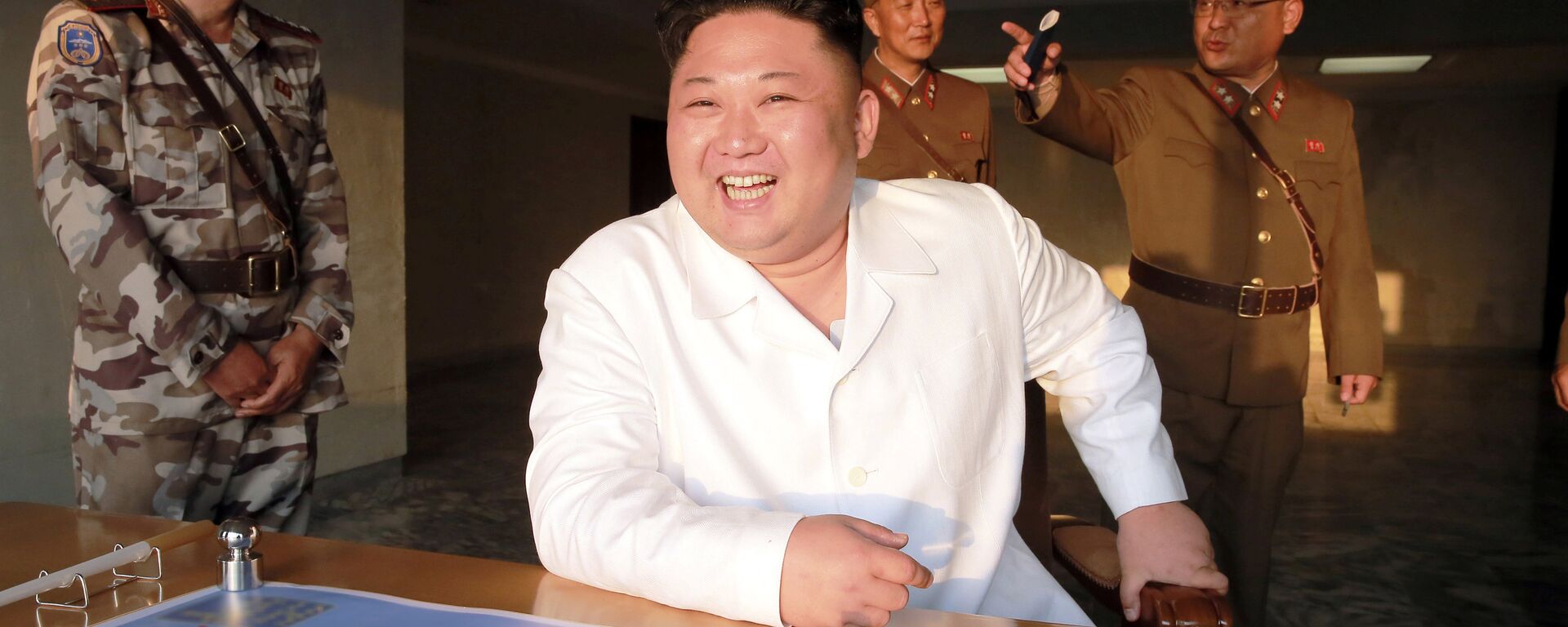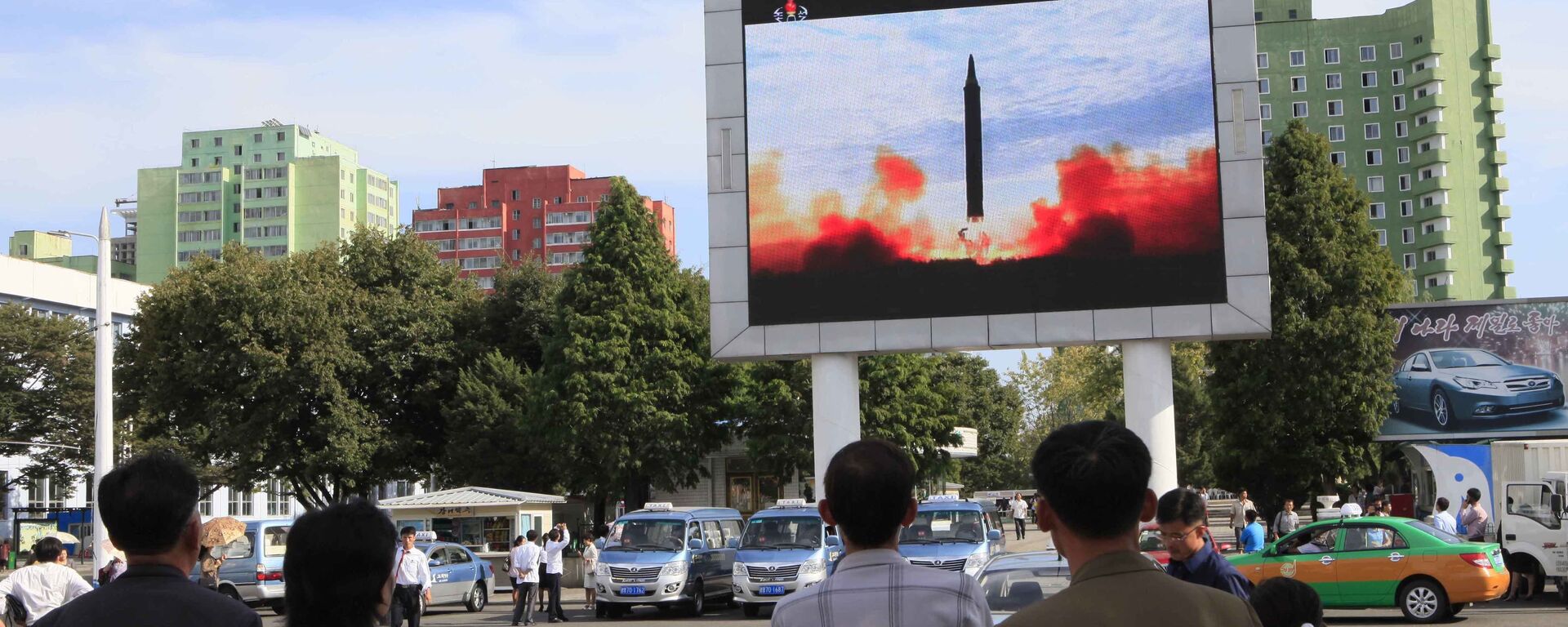US Soldier 'Defects' to North Korea
17:37 GMT 19.07.2023 (Updated: 13:37 GMT 18.09.2023)
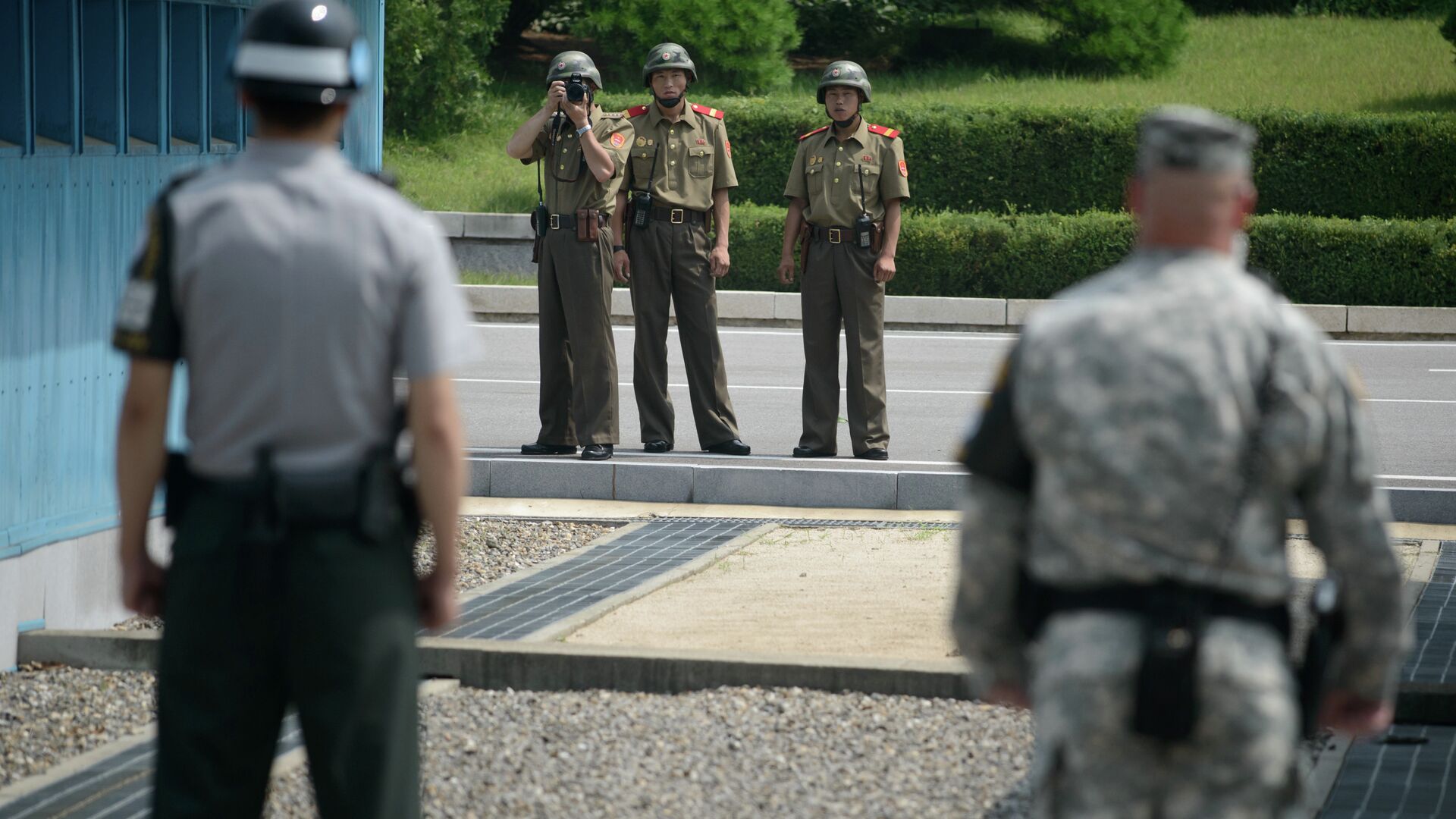
© AFP 2023 / Ed Jones
Subscribe
Private Travis King, a US Army cavalry scout, crossed the demarcation line into North Korea and is believed to be currently in the nation's custody, according to the US Forces in Korea. What happens to US citizens who end up in the Democratic People's Republic?
The UN Command, the multinational military force backing South Korea, tweeted that a US national had crossed into North Korea "without authorization" on July 18 while he was on an "orientation tour" of the Joint Security Area (JSA), the only section of the demilitarized zone (DMZ) between North and South Koreas that does not have a physical barrier.
Remarkably, a Korean-language version of the UN Command message said that the US national in question had "defected to North Korea."
A U.S. National on a JSA orientation tour crossed, without authorization, the Military Demarcation Line into the Democratic People’s Republic of Korea (DPRK). We believe he is currently in DPRK custody and are working with our KPA counterparts to resolve this incident. pic.twitter.com/a6amvnJTuY
— United Nations Command 유엔군사령부/유엔사 (@UN_Command) July 18, 2023
Who is the US Soldier?
Even though the US national crossed into the DPRK as a civilian, he was later identified as 23-year-old African-American Pvt. 2nd Class Travis King, who was assigned to the 6th Squadron, 1st Cavalry Regiment, 1st Brigade Combat Team, 1st Armored Division out of Fort Bliss (Texas) at the time of his rotation in South Korea.
Photo of 2nd Class Private Travis King, age 23 from Racine, WI. pic.twitter.com/mnRkoTqpy1
— Kim Leigh Martin (@Paddleboarder) July 18, 2023
Prior to the incident at the JSA, the soldier had been held in a South Korean prison over assault charges. The US military planned to send him to Fort Bliss for additional disciplinary actions. He was released from the South Korean prison and escorted to the airport.
However, instead of flying home, King somehow fled the airport and joined a tour of the JSA. According to eyewitnesses, while being at the Military Demarcation Line the young man broke away from the group of tourists, gave out a loud "ha-ha-ha" and ran between some buildings into North Korea.
How Many US Soldiers Have Defected to North Korea?
To date, seven American military servicemen have defected to North Korea since the end of the Korean War of 1950-53.
Private Larry Allen Abshier, a member of the 1st Reconnaissance Squadron, 9th Cavalry, 1st Cavalry Division, abandoned his post in South Korea and went to the north in May 1962.
James Joseph Dresnok, a private first class with the 1st Cavalry Division, defected to the DPRK in August 1962, running across a minefield in broad daylight.
Jerry Wayne Parrish, a US Army corporal, crossed the DMZ into North Korea in 1963. In January 1965 then-US Army Sergeant Charles Jenkins abandoned his patrol and walked across the Korean Demilitarized Zone, defecting to the DPRK. All four, Dresnok, Abshier, Parrish, and Jenkins, had different reasons for defection. They worked together and cooperated with the DPRK government.
Roy Chung is believed to be the fifth US Army defector to North Korea. In June 1979, then-Private First Class Chung allegedly deserted while serving in West Germany. Two months later, North Korea's broadcaster announced that the man defected to the DPRK. US Army soldier Joseph T. White, who was assigned to 1st Battalion, 31st Infantry Regiment in South Korea, fled to North Korea and requested asylum there in August 1982. Pvt. Travis King is believed to be the seventh defector from the US Army.
How Many Americans Are Detained in North Korea?
According to some estimates, around 20 American civilians had been detained in North Korea since 1996 on charges including espionage, illegal entry, unauthorized religious activity or committing hostile acts. The release of the aforementioned civilians was then secured by the US government.
One of them, Otto Warmbier, who was released after 17 months in captivity, died several days after returning to the US, prompting a lot of controversy. No clear causes of his death emerged. Bruce Byron Lowrance was the last one released by Pyongyang after being arrested for entering the DPRK illegally from China in October 2018.

The Central Square, named after Korea's found Kim Il Seng, in Pyongyang. File photo
© Sputnik / Maria Frolova
/ Are Americans Under Threat in North Korea?
According to the US mainstream media estimates, as of 2017, there had been roughly 200 Americans living and working in North Korea under the rule of Kim Jong-un. As per Times Magazine's study, the aforementioned American citizens were doing educational, medical or infrastructural work in the DPRK, and sometimes raised families. Of those 200, about 50 worked in North Korea’s Rason Special Economic Zone, near the Russian border, on social entrepreneurship and humanitarian projects.
The magazine also reported on a predominately American-run school, the Pyongyang University of Science and Technology, that had brought about 70 American professors and staff members each semester.

North Korean men push their bicycles as they cross a road in Pyongyang, North Korea, Saturday, March 9, 2019.
© AP Photo / Dita Alangkara
The media outlet claimed at the time that the fact that Americans were freely living and working in North Korea was "controversial" because their services "indirectly helped" the DPRK government. When the Trump administration stated in 2017 that it would ban travel to North Korea, the American community in North Korea – some of whom were Evangelical Christians – said that despite respecting the president's stand, they would nevertheless stay and work in the DPRK.
What are the Issues Between North Korea and the United States?
In the eyes of ordinary Americans, King's move is nothing short of mind-boggling given the current atmosphere of heightened animosity between Washington and Pyongyang. The US media routinely smears North Korea as a belligerent "dictatorship". The US State Department urges US citizens not to travel to North Korea "due to the continuing serious risk of arrest and long-term detention of US nationals."
However, the roots of mutual distrust between the nations run deep into the Cold War era. The US and its allies joined the Korean War on the side of South Korea in 1950 against the Democratic People's Republic of Korea (DPRK) backed by the USSR and China at the time. The hostilities began on June 25, 1950, with the advance of North Korean troops to the south; however, according to Pyongyang, it was their southern neighbors who started the invasion and moved into the territory of the DPRK up to 2-3 kilometers. The war ended in 1953 with the DPRK upholding its independence and North and South remaining split.
The Korean Armistice Agreement was signed on July 27, 1953, and brought a ceasefire in the Korean War. The United Nations Command (UNC) on the one side and the Korean People's Army and Chinese People's Volunteers on the other side agreed to establish a demilitarized zone (DMZ) along their shared border (248 km).
How Many American Soldiers Died in the Korean War?
The Korean War (1950-1953) claimed the lives of approximately 36,574 US soldiers with more than 100,000 being wounded. For comparison's sake, North Korean casualties are estimated at around 600,000 civilians and 406,000 soldiers.

North Korea celebrates 60th anniversary of the Korean war end
© Sputnik / Ilya Pitalev
/ Did the US Lose the Korean War?
Officially the US did not lose the Korean War, however, it failed to win, too. Back in 1953, the US media described the situation as "a tactical stalemate." The hostilities ended where it began, at the 38th parallel.
What Does the US Army Do in Korea?
The stated mission of United States Forces Korea (USFK) – a sub-unified command of US Indo-Pacific Command (USINDOPACOM) – is to support the United Nations Command (UNC), the multinational military force established on July 7, 1950, to provide assistance to South Korea during and after the Korean War. The US military force in South Korea amounts to 28,500 soldiers, sailors, airmen, and marines. As per DPRK authorities, the US extensive military presence in South Korea and continuous muscle-flexing is preventing North and South from mending fences and signing a peace deal.
On April 27, 2018, Seoul and Pyongyang signed the Panmunjom Declaration to transform the armistice agreement into a peace treaty with the cooperation of the United States under then-President Donald Trump and China under Chairman Xi Jinping.
However, the Biden administration ceased any attempts to normalize relations between North and South and hailed the election of South Korean President Yoon Suk-yeol who declared the DPRK as the nation's major enemy and did not rule out a pre-emptive strike against Pyongyang.
The intensified US-South Korean joint drills and military buildup as well as US Indo-Pacific Command (USINDOPACOM) designating Russia, China and North Korea as major "threats" provoked a backlash from the DPRK that responded with resumed ballistic missile tests. North Korea's new solid-fuel and nuclear-capable Hwasong-18 is believed to be capable of reaching the US mainland.

